Understanding and maximizing your employee benefits is crucial to pursuing long-term financial stability and well-being. If you’ve recently received notification that it’s time for your annual Benefits Election season, this guide will help you navigate the options available to you. Employee benefits are a critical component of your overall compensation package, and understanding them can have a lasting impact on your financial security, health, and confidence. However, many employees overlook or misunderstand these benefits, leaving valuable opportunities untapped. This guide breaks down key aspects of employee benefits—financial, insurance, and lesser-known perks—so you can make informed decisions.
Financial Benefits
Financial benefits, such as retirement plans and stock/incentive programs, are some of the most valuable offerings an employer can provide. Here’s what you need to know:
401(k) and Similar Plans
Many employers offer tax-advantaged retirement savings vehicles that allow employees to set aside a portion of their income for the future. If your employer offers a 401(k), 403(b), or something similar, maximizing your employee benefits should start with taking advantage of this opportunity.
- Enrolling for the First Time: When you join a company that offers a retirement plan, you may have the option to enroll immediately or after a short waiting period. Be sure to complete the enrollment process as soon as you’re eligible and begin contributing to the plan. (We have a simple guide to 401(k) enrollment here.)
- Reviewing if You Are Already Enrolled: If you are already contributing to an employer retirement account, it’s important to review your plan periodically. In another one of our blogs, we do a deep dive of three things to review regularly in your 401(k), but here are a few of the high points:
- Contribution and Employer Match: Check if you are contributing enough to maximize your employer’s matching contributions, at a minimum. Employer matches are essentially free money, so aim to contribute at least up to the match threshold. Also aim to increase your contribution amount annually, if possible.
- Allocation: Evaluate how your funds are allocated. Are you appropriately diversified across asset classes like stocks, bonds, and cash? Rebalancing your investments at least once a year can help keep your risk levels in check. If you have investments outside of your employer retirement account, make sure you consider your overall portfolio allocation, not just that of your 401(k).
- Beneficiaries: Review and update your beneficiaries, especially after major life events like marriage, the birth of a child, or divorce. Ensuring your 401(k) assets go to the right people is essential for effective estate planning.
Stock Plans and Incentive Benefits
Many employers offer stock options or other incentive programs as part of their benefits package. These can include stock purchase plans, stock options, or performance-based bonuses.
Different companies offer different types of stock or incentive programs. Make sure you fully understand the rules of your plan and their potential consequences, including:
- Vesting: This is the process by which you gain full ownership of your stock or options. Understand your company’s vesting schedule to know when you can sell your shares.
- Taxes: Stock options and other equity awards can have significant tax implications. Be aware of whether you are dealing with non-qualified stock options (NSOs) or incentive stock options (ISOs), as they have different tax treatments.
- Holding Periods: Some stock awards require you to hold your shares for a certain period before selling to qualify for favorable tax treatment. Review these rules to maximize your after-tax return.
Insurance Benefits
Employer-provided insurance benefits can protect you and your family against significant financial risks. Reviewing these benefits regularly ensures you have adequate coverage without paying for unnecessary extras.
Life Insurance
Employer-provided life insurance is a common benefit, often in the form of group term life insurance.
- Current or Future Need for Coverage: Consider whether the amount provided by your employer is sufficient. If not, you may want to purchase additional coverage either through your employer or on the individual market.
- Cost: Group life insurance is generally less expensive than a term life policy purchased individually because the employer negotiates a group rate. However, compare costs if you need additional coverage.
- Portability: Employer-sponsored life insurance often (but not always) ends when you leave the company. Check to see if you have a portable policy that you can take with you. Some group life policies will allow you to continue coverage if you are willing to pay premiums out of pocket.
- Your Health Status: If you have a health condition that might make getting individual coverage difficult, maximizing your employer’s life insurance could be a good strategy.
Health Insurance
Health insurance is one of the most essential employee benefits, and it can vary significantly between employers. Here’s what to review:
- Options Available to You: Review the cost (including premiums, deductibles, co-pays, and co-insurance) for each health plan option your employer offers. Compare coverage against your health needs. Ensure your primary care physician is considered “in-network” for any plan.
- Dependents: If you’re covering dependents, such as a spouse or children, ensure the plan’s network and coverage meet their healthcare needs as well. If applicable, coordinate with a spouse’s insurance plan to determine the best family arrangement.
- Non-Insurance Health Benefits: Some employers offer supplemental health benefits, such as critical care or hospital indemnity plans. These plans can provide additional coverage if you’re diagnosed with a severe illness or require hospitalization.
- HSAs, HRAs, and FSAs: Health Savings Accounts (HSAs), Health Reimbursement Arrangements (HRAs), and Flexible Spending Accounts (FSAs) are tax-advantaged accounts that can help you save on medical expenses. HSAs in particular are valuable as they can serve as a secondary retirement account, thanks to their triple tax advantage.
Disability Insurance
Disability insurance replaces a portion of your income if you become unable to work due to illness or injury and can often be the difference between paying for childcare, groceries, and the mortgage, or being unable to make ends meet.
- Emergency Fund: If you don’t have substantial savings, disability insurance can fill the gap. The need for coverage usually decreases as your emergency fund grows.
- Coverage: Short-term disability typically covers the first 3 to 12 months of disability, paying between 40-70% of your salary. Long-term disability covers disabilities lasting longer than one year, usually paying between 60-80% of your salary.
- Definition of Disability: Make sure you understand how your employer defines “disability.” Some plans only pay if you cannot work in any occupation, while others cover you if you cannot perform your specific job (own-occupation).
Other Benefits
Beyond the standard financial and insurance benefits, many employers offer additional perks that can improve your financial and personal well-being.
- Student Loan Repayment: Some employers help with student loan repayment and even “match” an employee’s 401(k) contributions by paying toward the loan. This can help you pay off debt faster and save on interest.
- Legal Services: Legal assistance plans provide access to affordable legal services for things like will preparation, estate planning, or legal representation. We’ve previously discussed the importance of having basic estate planning documents. This benefit can be an inexpensive way to fill that gap.
- Employee Assistance Programs (EAPs): EAPs offer support for various personal issues, including counseling for mental health, substance abuse, and family matters.
Final Thoughts on Maximizing Your Employee Benefits
Understanding and maximizing your employee benefits is key to pursuing financial freedom and protecting your health and well-being. Take the time to review your benefits annually. Stay informed about any changes to your employer’s benefits package, and don’t hesitate to seek advice from HR professionals or financial advisors (like us!). This proactive approach will help ensure you’re leveraging every advantage your employer offers.
Please remember to contact BentOak Capital (“BentOak”), in writing, if there are any changes in your personal/financial situation or investment objectives for the purpose of reviewing/evaluating/revising our previous recommendations and/or services, or if you want to impose, add, to modify any reasonable restrictions to our investment advisory services, or if you wish to direct that BentOak to effect any specific transactions for your account. A copy of our current written disclosure Brochure discussing our advisory services and fees continues to remain available upon request or at www.bentoakcapital.com.
This information is not intended to be a substitute for specific individualized tax advice. We suggest that you discuss your specific tax issues with a qualified tax advisor.
This material was created for educational and informational purposes only and is not intended as ERISA, tax, legal or investment advice. If you are seeking investment advice specific to your needs, such advice services must be obtained on your own separate from this educational material.
No investment strategy assures a profit or protects against loss.
Securities offered through LPL Financial, Member: FINRA/SIPC. Investment advice offered through BentOak Capital, a registered investment advisor and separate entity from LPL Financial.







